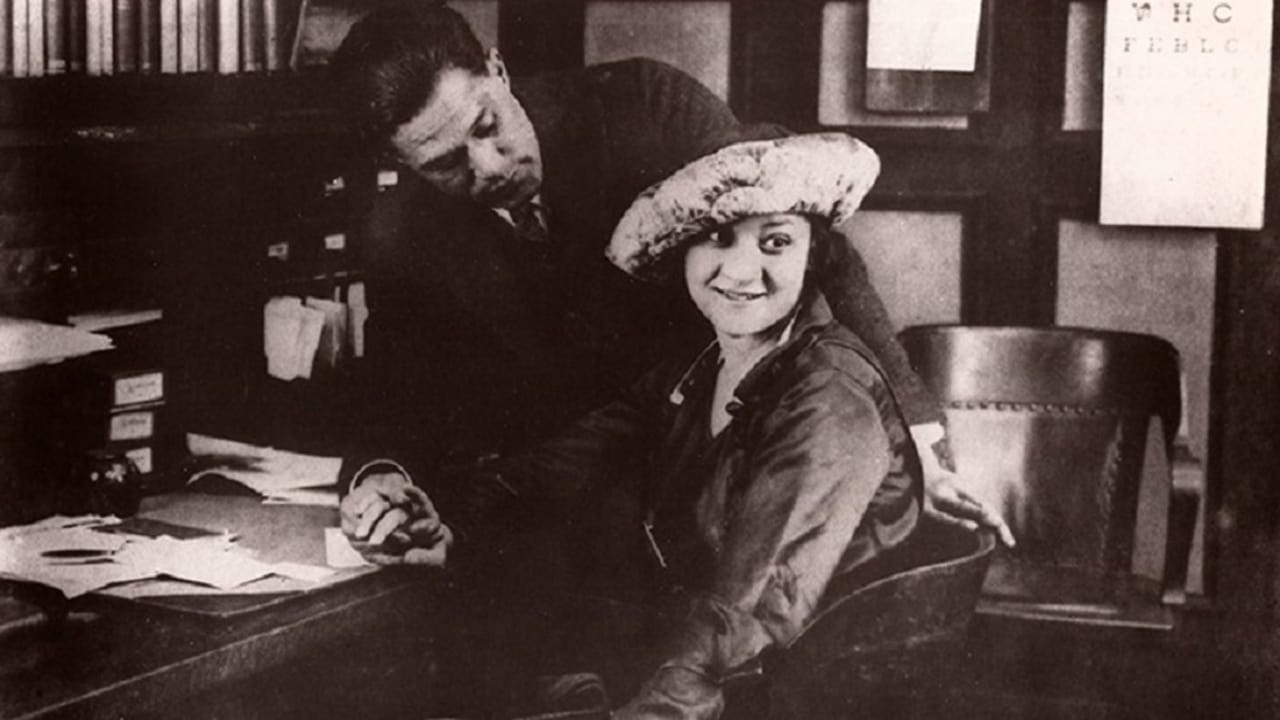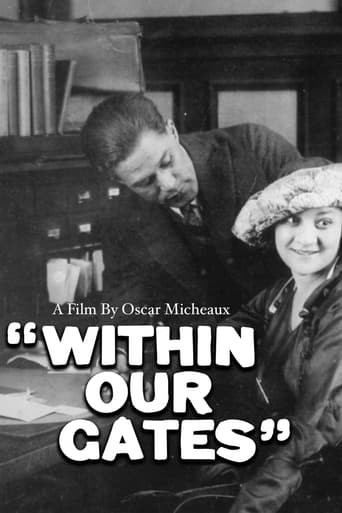

I first found this silent film listed in the book 1001 Movies You Must See Before You Die, then available through the BFI (British Film Industry), I was always going to watch it, especially with the facts I read about it. Basically young African-American woman Sylvia Landry (Evelyn Preer) is visiting her cousin Alma Prichard (Flo Clements) in the north, where there is less racial prejudice compared to the deep south and her home town of Piney Woods. Sylvia is awaiting the return of her fiancé, Conrad Drebert (James D. Ruffin), so that they can marry, Alma also loves Conrad, and would like Sylvia to marry her brother-in-law, gambler and criminal Larry (Jack Chenault). Alma creates a compromising situation for when Conrad returns, he subsequently leaves for Brazil, abandoning Sylvia, while Larr murders a man during a poker game, a disheartened Sylvia returns to Piney Woods. Sylvia meets minister Reverand Jacobs, who runs the overcrowded Piney Woods School, a rural school for black children, he is struggling to cope with the small amount the state offer to give black children an education and the school faces closure, so Sylvia volunteers to try and raise $5,000. Sylvia has little success returning to the north, including her purse being stolen, but then she meets Dr. V. Vivian (Charles D. Lucas), who helps her recover her purse. Sylvia saves the life of a child playing in the street, almost being hit by a car herself, the car owner is wealthy philanthropist Mrs. Elena Warwick, who is sympathetic to her quest and offers to donate the $5,000 she needs. Her bigoted Southern friend Mrs. Geraldine Stratton (Bernice Ladd) tries to discourage her, but Mrs. Warwick increases the donation to $50,000, with her job done Sylvia makes her way back to Piney Woods. Dr. Vivian has fallen in love with Sylvia, he goes to Alma to try and find her, and through flashbacks, she tells him all about her shocking past. Sylvia was adopted and raised by a poor black family, her adoptive father Philip Gridlestone (Ralph Johnson) was accused of the murder of an unpopular but wealthy white man, because of this the family was lynched, Sylvia escaped and was almost raped, Gridlestone's brother discovered Sylvia was the mixed-race daughter of Philip. After hearing about her life, Dr. Vivian meets with Sylvia, he encourages her to be proud of the contributions African Americans have made to her country, he professes his love for her, and the film ends with them getting married. Also starring William Smith as Detective Philip Gentry, William Stark as Jasper Landry, Mattie Edwards as Jasper's Wife, E.G. Tatum as Efram - Gridlestone's Servant, Grant Edwards as Emil Landry and Grant Gorman as Armand Gridlestone. This film was made five years after the release of The Birth of a Nation, this film is seen as a response to it, it is one of the earliest surviving films made by an African American filmmaker, it is certainly a landmark and controversial black-and- white film, with its depiction of racial violence and segregation, and historically important, a shocking but most interesting silent drama. Good!
... View MoreWith this month being once again Black History Month, I'm-for the second time since first writing these IMDb reviews back in 2006-commenting on various films made by African-Americans both in front of and behind the screen in the order they were made and released chronologically whenever possible. So it's 1920, which is the year from which the earliest surviving movie made by writer, producer, and director Oscar Micheax comes from. In Within Our Gates, Sylvia Landry (Evelyn Preer) dedicates her life to helping poorly educated kids of her race get a good education in the Southern states she resides in. But the money the school gets are not enough so she goes up North to get some more funding from a rich white lady. I'll stop there and just say that while there are some compelling scenes concerning other characters-like that of a couple of people that betray their own race like that of Rev. Wilson Jacobs (S. T. Jacks) and Efram (E. G. Tatum), a loyal butler of a wealthy white man named Gridlestone-the most compelling focus of the story concerns Sylvia's background concerning her previous family life with the Landrys which consist of father Jasper (William Stark), his wife (Mattie Edwards), and their young pre-teen son, Emil, (Grant Edwards) when we learn of their fates and that of Sylvia herself when she nearly gets mixed up with another man named Gridlestone, especially when the intertitle reveals his connection with her. Some of the other characters like that of fiancée Conrad Drebert (James D. Ruffin), Alma Prichard (Flo Clements), Larry Prichard (Jack Chenault), Dr. V. Vivian (Charles D. Lucas), and Det. Philip Gentry (William Smith) don't seem so connected especially concerning Conrad but they also have some compelling scenes. One more thing, as a Chicago native, I was fascinated seeing the Windy City as it looked at the time and learning that some of these players came from there. So on that note, Within Our Gates is worth seeing.
... View MoreIt's funny how this movie is mostly being known for just one thing; the fact that it's the oldest, still existing movie, (that we know off of course) that got directed by an Afro-American film-makers. But this of course in itself is really not saying much about the actual movie. It doesn't say anything about its quality or about its pioneering innovativeness.Still fact remains that this is an interesting piece of history. It's a account on film, on how life for the average colored person was back in the early 20th century. It's not only that but it's also a view on how life for them should be like. A life without racism and a life in which they get treated equally, also by the tight high upper white class. It's purely a movie shot from the black man and woman's perspective, which makes this movie an unique watch really.It's a movie with mostly a cast consisting out of Afro-American actors. One thing that strike me about this was that those actors on film did not looked Afro-American at all. You would expect in a black & white person that an Afro-American would appear as black but in fact their faces and bodies often look more white than black, on film. Perhaps this is also part of the reason why film-makers in the old days every so often used blackface-actors, rather than actual Afro-Americans for their movies. A lot of directors from the early days of cinema get now day slammed for not using actual Afro-Americans in their movies but perhaps there were more and other, more movie-technical, reasons for this, rather than simply being racist toward our colored fellow man or woman.As for the actual movie itself; it's pretty good. It has a great story, that of course was considered to be quite controversial for its time, due to its subject and the fact that it got made by an almost entirely black cast and crew. It showed how things really were at the time, for the Afro-Americans but it's also a movie with a message and one with hope for better times, that in reality wouldn't come for the Afro-Americans until decades later.Considering the fact that this movie didn't got made with the backing of studio's or big money spenders and experienced people within the business, the movie is all the more impressive to view. It's simple a well made and nicely constructed film, that keeps its story flowing really well at all times and keeps the movie a good and interesting one to watch.A surprisingly good early 'blackcinema' movie.8/10http://bobafett1138.blogspot.com/
... View MoreOscar Micheaux is one of my motion picture heroes.With courage and determination, he set out to make movies for and about black people when it wasn't otherwise much done.He was a pioneer in independent film-making, raising money in the most unusual places and unusual ways.He deserves a lot of praise ... but, alas, his results were too often disappointing."Within Our Gates" has a lot of potential, but most of it is unmet.The acting is pretty good, but the camera work and editing are lacking; and the script misses badly.The story is a good one, and the school that is at the heart of a major subplot has a real-life counterpart: Professor Laurance Jones created a school for the black people of the piney woods near Jackson, Mississippi, in the very earliest years of the 20th century.Professor Jones' story is incredibly inspiring and I urge everyone who cares about spirit and courage to take a look (http://www.antiqbook.com/boox/vol/21991.shtml is one source).Micheaux and Jones have somewhat parallel lives, though Jones ultimately achieved recognition in his lifetime.Micheaux should have, and I am grateful beyond words that at least his films are finally being seen by a wider audience.They are flawed, yes, but they present two stories we all need to know about: The actual topic of the movie, and that of Micheaux himself.The ending of this movie is, frankly, beyond my comprehension. It seems to come out of thin air, and I fear it must have been hastily tacked on in order to placate someone. Too bad, but still the movie is historically valuable.This is added June 10, 2015: There is a print available at YouTube.com, https://www.youtube.com/watch?v=h1E0NrcnwAEI haven't watched more than a few seconds, but so far it's a terrible print.
... View More